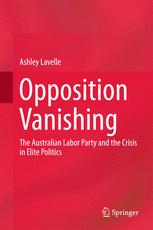

Most ebook files are in PDF format, so you can easily read them using various software such as Foxit Reader or directly on the Google Chrome browser.
Some ebook files are released by publishers in other formats such as .awz, .mobi, .epub, .fb2, etc. You may need to install specific software to read these formats on mobile/PC, such as Calibre.
Please read the tutorial at this link: https://ebookbell.com/faq
We offer FREE conversion to the popular formats you request; however, this may take some time. Therefore, right after payment, please email us, and we will try to provide the service as quickly as possible.
For some exceptional file formats or broken links (if any), please refrain from opening any disputes. Instead, email us first, and we will try to assist within a maximum of 6 hours.
EbookBell Team

4.7
86 reviewsThis book questions the common understanding of party political behaviour, explaining some of the sharp differences in political behaviour through a focused case study—drawing systematically on primary and archival research—of the Australian Labor Party’s political and policy directions during select periods in which it was out of office at the federal level: from 1967–72, 1975–83, and 1996–2001. Why is it that some Oppositions contest elections with an extensive array of detailed policies, many of which contrast with the approach of the government at the time, while others can be widely criticised as ‘policy lazy’ and opportunistic, seemingly capitulating to the government of the day? Why do some Oppositions lurch to the right, while others veer leftward? Each of these periods was, in its own way, crucial in the party’s history, and each raises important questions about Opposition behaviour.
The book examines the factors that shaped the overall direction in which the party moved during its time in Opposition, including whether it was oriented towards emphasising programmes traditionally associated with social democrats, such as pensions, unemployment support, and investment in public health, education, infrastructure, and publicly owned enterprises, as well as policies aimed at reducing the exploitation of workers. In each period of Opposition examined, an argument is made as to why Labor moved in a particular direction, and how this period compared to the other periods surveyed.
The book rounds off with analysis of the generalisability of the conclusions drawn: how relevant are they for understanding the behaviour of other parties elsewhere in the world? Where are social democratic parties such as the ALP heading? Is Opposition an institution in decline in the Western world?